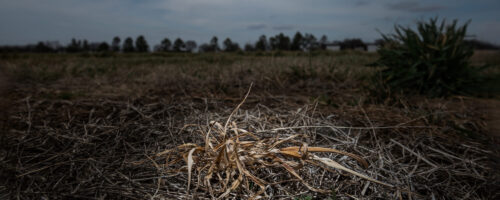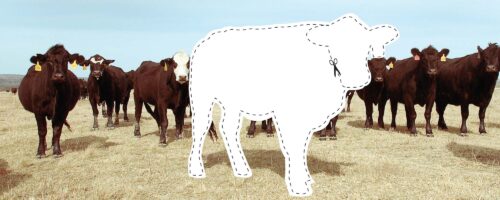Prescribed Fire Is Essential to the Land
Prescribed fire, grazing and rest are integral processes for maintaining the integrity, stability and beauty of the biotic community in the Southern Great Plains and throughout the U.S.
In 1949, a book titled A Sand County Almanac by Aldo Leopold, an American ecologist and forester, was published. In it, he introduced the phrase “land ethic,” which refers to a responsible relationship between people and the land they inhabit. This phrase helped usher in the first major change in human awareness and attitudes toward land management. A chief tenet of Leopold’s “land ethic” is that “A thing is right when it tends to preserve the integrity, stability and beauty of the biotic community. It is wrong when it tends to do otherwise.”
Land Needs Prescribed Fire, Grazing and Rest
Prescribed fire, grazing and rest are integral processes for maintaining the integrity, stability and beauty of the biotic community in the Southern Great Plains and throughout the U.S. When managing native plant communities, it is impossible to achieve beneficial outcomes when using only the process of fire, the process of grazing or the process of rest. They should be used in combination with each other. However, this article is about fire. So let’s contemplate how it applies to Leopold’s “land ethic.”
Fire as Part of a Land Ethic
There are four ecosystem processes that must function properly in order to ensure the whole ecosystem’s health. They are: secondary plant succession, the energy cycle, the mineral cycle and the water cycle. Proper management of soils and plants is essential for optimum functionality of these processes. Of these processes, the most obvious and easily assessed on a daily basis is secondary plant succession. The more that disturbances such as prescribed fire and grazing are applied to plant communities, the less “advanced” they become. The more rest that plant communities receive, the more “advanced” they become. Managers constantly monitor plant community diversity and structure and, depending on goals, apply differing amounts of fire, grazing and rest.
For example, in a plant community dominated by tall grasses, fire can be used to temporarily shift the plant community toward a forb-dominated community with more bare ground that’s beneficial to upland sandpiper and northern bobwhite. Or, applied differently, fire can be used to maintain tall-grass-dominated plant communities for cattle and for wildlife species such as Cassin’s sparrow and dickcissel. The timing of fire is important in achieving either of the above outcomes. Historically, most fire practitioners considered the time frame between January and April as the “burn season.” Research and demonstration in recent years has proven that the “burn season” is actually year-round. Growing-season burning has proven to be safer and more effective at controlling brush encroachment and increasing plant diversity, especially during the latter part of the growing season.
Fight Brush, Increase Forage Quality
Brush encroachment throughout the Great Plains has been beneficial to some birds and animals but very detrimental to the birds and animals that rely on wide open spaces. Brush encroachment also has a negative effect on total forage production for cattle, which reduces the number of cattle a particular tract of land can support without degrading one or all of the ecosystem processes. Fire can be applied to keep open spaces open for those obligate wildlife species and to maintain cattle production. Fire is also being applied to increase forage quality for cattle during the spring as well as other times of the year by removing old, decadent herbaceous plant growth.
Recent wildfires in many western states are being fueled in part by excessive buildup of plant material. When secondary plant succession is left unchecked over time through lack of disturbances such as fire and grazing, plant communities become decadent and accumulate excessive plant material. This creates more hazardous conditions in the event of wildfire. Regular application of prescribed fire helps mitigate fuel buildup and therefore reduces the intensity of wildfires, which can greatly retard secondary plant succession.
Prescribed Fire Is a Process
Although prescribed fire has received a lot of attention is recent years, it is not a silver bullet for managing native plant communities. Prescribed fire is a process and should be well planned to safely accomplish desired goals. Grazing and rest are major considerations for the successful use of prescribed fire. If grazing causes an inadequate fuel load in grassland communities, burning is ineffective until stocking rate or grazing management is corrected. However, its wise use, combined with grazing and rest, certainly preserves the integrity, stability and beauty of the biotic community. It is wrong to do otherwise.



Comment